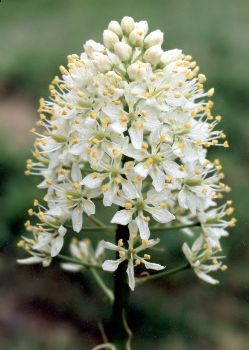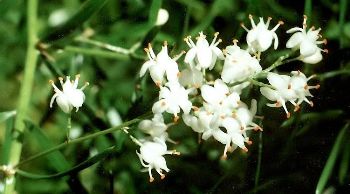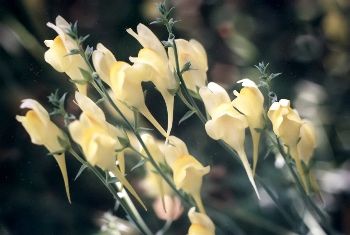Tiny & Pale
by Valerie (July 15, 2000)
revised November 9, 2003
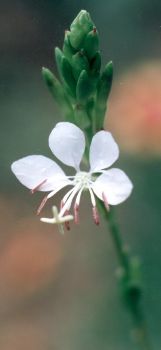 There are a number of flowers that are not very spectacular because they are small and white or light yellow in color. Since our gardens are small (and crowded), the tiny plants fit right in and invite a closer look.
A perennial native that does rather poorly in our gardens is white gaura (Gaura lindheimeri). I've tried transplanting wild ones as well as purchasing a small plant, but they all die after one summer. This plant should do okay, since I see it growing along roads all over the place. When it does grow, it has pretty and delicate little flowers at the end of long stems. Other names are wand flower and whirling butterflies. There are cultivars available that come in shades of pink and also some that grow very large.
Death camas (Zigadenus nuttalli) is very aptly named, since it contains extremely poisonous chemicals. This native bulb has a short spring growing season, during which it puts out long onion-like leaves (without an onion smell), then sends up a single stalk that blooms at the top with a cluster of white flowers. After going to seed, it dies back quickly. I acquired our single plant from a field, where the bulb was very deep. The first year it didn't bloom, the second year the young flower stalk was eaten by slugs, but subsequent years it has bloomed handsomely. Because there is no sign of it most of the year, it is easy to forget where it's planted and put something else over it, but it manages to come up in spite of all insults.
We have a few potted plants that we bring in for the winter, sometimes just leaving them in the garage because they are too big for anywhere else. One of these is a huge asparagus fern (Asparagus densiflorus) that has been repotted several times to accommodate its growth. The blossoms are tiny, but pretty, and it blooms all summer long, producing attractive berries that turn bright red. The birds eat these and spread the seeds and, although they grow quite slowly, the young plants survive the winter just fine, although they die back to the ground, and live among the other vegetation in the gardens. The fully mature asparagus fern has thorns all over it, making it difficult to move. It also produces root nodules that retain moisture so it is very drought tolerant. The anoles that live in our garden seem to prefer the fern's pot for laying their eggs and I've seen the newly hatched baby lizards climbing about in the foliage. 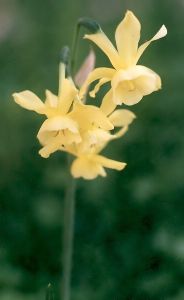
One of the tinier bulbs we have grown are some daffodils (Narcissus sp.) of the Triandrus division (5). These little flowers are only about 6 inches tall and have an attractive drooping manner. Their yellow color is not bright, but stands out since they bloom so early in the spring that not too much else is growing yet. The bulbs were short-lived and the plants disappeared after several years. |
